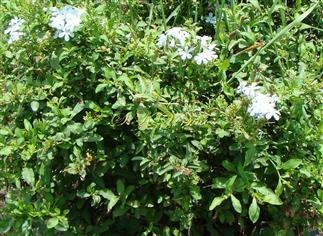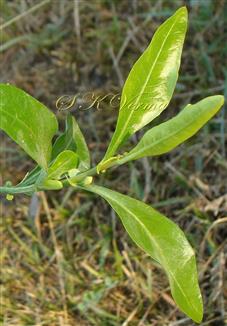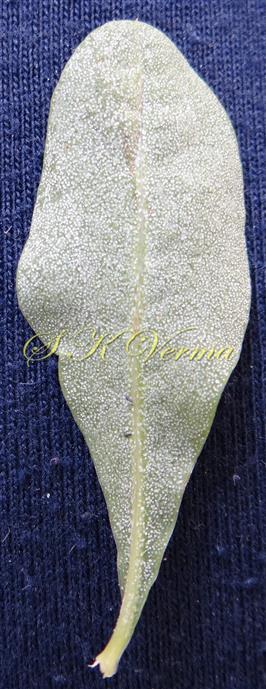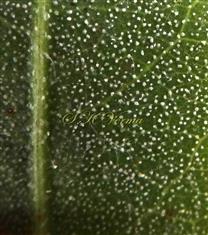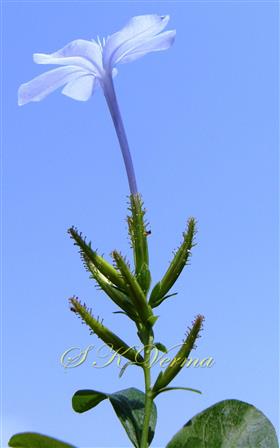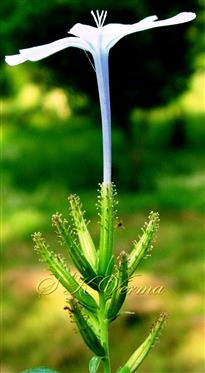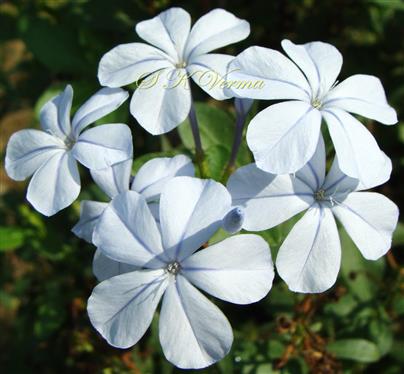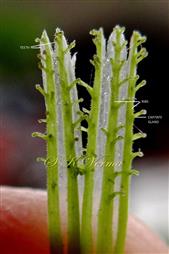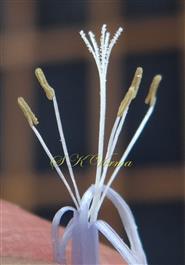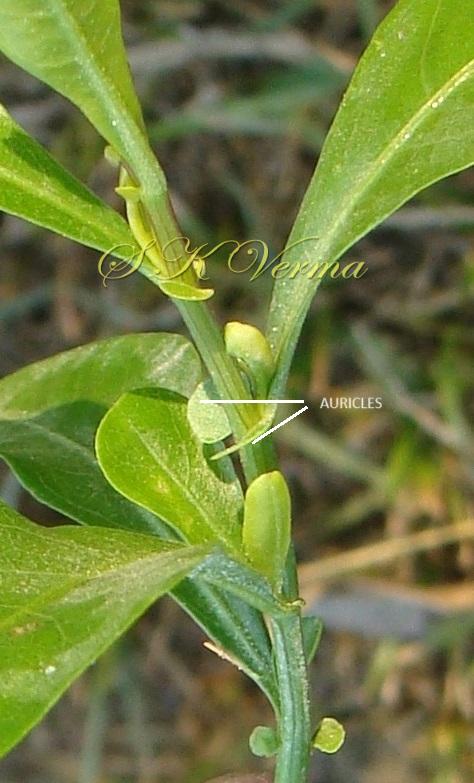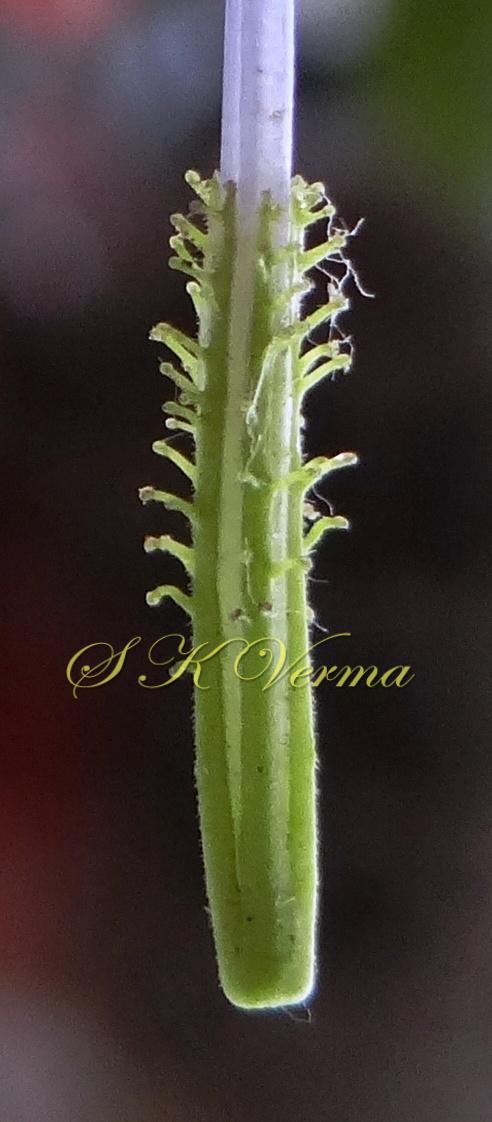PLUMBAGO
Plumbago
Tourn. ex L., Sp. Pl. ed.1: 151. 1753; Gen. Pl. 5: 75. 1754; Boiss. in DC., Prodr. 12: 690. 1848; Boiss., Fl. Or. 4: 875; 1869; Clarke in Hook. f., Fl. Brit. India 3: 480. 1882; Fl. China @ eFloras.org 15: 190; Fl. North Amer. @ eFloras.org vol. 5; Fl. Pak. @ eFloras.org
Plants perennial shrubs or suffrutescent herbs. Stem erect, prostrate or climbing, striate. Leaves cauline, alternate, exstipulate, sessile or short-petiolate; leaf blade elliptic to oblanceolate or spatulate, base narrowed, margin entire, membranous. Inflorescence terminal or axillary, spike-like racemes or panicles; bracts and bracteoles herbaceous, greenish; pedicels very short. Flowers bisexual, actinomorphic, hypogynous, pentamerous, conspicuous. Calyx tubular with 5 greenish ribs densely studded with large stalked capitate glands, membranous between ribs; limb not expanded, lobes 5, minute, usually triangular. Corolla salver-shaped, tube much larger than calyx, limb rotate, 5-lobed, lobes spreading, obovate, round or truncate, mucronate. Stamens 5, included or exserted, free, as long as corolla tube; filaments basally expanded; anthers linear, bithecous, dehiscence longitudinal. Ovary superior, ellipsoid, ovoid or pyriform, unilocular with 1 pendulous ovule from a long basal funicle; styles 5, united throughout their length, terminally 5-branched, branches filiform; stigmas on inner surface of style branches covered with stalked or sessile glands. Fruit capsule, included, brownish, long-beaked; valves coherent at apex.
23 species
Plumbago auriculata
Plumbago auriculata
Lam. in Lam. et al., Encycl. 2: 270. 1786; Fl. North Amer. @ eFloras.org vol. 5; P. capensis Thunb., Prodr. Pl. Cap. 33. 1794; Parker, Fl. Punj. ed. 1: 301. 1918 (Reprint 1973); Fl. Pak. @ eFloras.org; Plumbagidium auriculatum (Lam.) Spach, Hist. Nat. Veg. 10: 339. 1841.
Evergreen perennial, subscandent shrub, about 1-2 m tall with about similar spread. Stems erect, trailing or climbing, diffusely branched, striate, glabrous or pubescent on youngest shoots. Leaves alternate; leaf blade 2.5-7 cm x 1-2.5 cm, elliptic, oblanceolate, elliptic- spatulate or elliptic-ovate, apex acute, obtuse and shortly mucronate, margin entire, base usually long attenuate into short petiole, petiole amplexicaul, auriculate; capitate chalk glands present on both leaf surfaces. Inflorescences ca. 5 cm long spikes or compact panicles; rachises short-pilose, eglandular. Flowers bracteate, bracts ovate-lanceolate, 3-9 mm x 1-2 mm; 2- bracteolate, bracteoles smaller than bracts; sessile or very shortly pedicellate, 2-2.5 cm long and across, pale blue, bisexual, actinomorphic, hypogynous, pentamerous. Calyx 1-1.2 cm long, tubular, finely pubescent and with 5 greenish ribs, ribs studded with stalked, capitate glands in distal half to 3/4th part, membranous between ribs; limb not expanded, teeth 5, short. Corolla gamopetalous, salverform, pale blue; tube slender, 2-2.5 cm long; limb ca. 2 cm across, lobes 5, obovate, apex rounded, truncate or rhomboidal. Stamens 5, free; filaments ca. 2.5 cm long; anthers ca. 2 mm long, linear-oblong, purple, scarcely exserted, dorsifixed, dehiscence longitudinal. Ovary superior, small, ca. 1 mm x 1 mm, unilocular with solitary basal ovule; style ca. 3 cm long, filiform, apically 5 branched, stigmas on inner surface of style branches covered with stalked or sessile glands.
Capsule 8 mm. Seeds brown, 7 mm. (Fruits not observed)
Common Names: Plumbago, Cape Leadwort; Nila Chitrak (Hindi)
